Richard Preston’s friendship with Michael Crichton is a strange one—mostly because the two writers never met.
It developed as Preston ’76 finished writing Crichton’s 17th novel, a thriller that finds seven grad students lured to Hawaii for a research project that turns out to be run by a sociopath scientist. The students are plunged into the insect world of Oahu and must struggle to survive.
“At first I thought I would be intimidated,” says Preston, “but I became entranced by Michael’s materials. It became an act of friendship, and I developed a feeling of affection for Michael even though I had never met him.”
Crichton (The Andromeda Strain, Jurassic Park) died of cancer in 2008 at the age of 66. He left behind an unfinished manuscript and the Michael Crichton Trust, which went looking for someone to complete the novel. Lynn Nesbit, Crichton’s literary agent, called Preston in 2009 to let him know about the search. Preston, author of several best sellers himself, was at work on a novel, but the Crichton project sounded “extremely tempting,”and he let Nesbit know he was interested.
He was given the manuscript of the third of the book that Crichton had completed. “There was a poignancy in it. Crichton was working at high speed as if he didn’t know if he had time left to finish it,” Preston says.
Preston (The Hot Zone, The Cobra Event) wrote a proposal of what he thought Crichton’s plan was for the book and supplied an ending (Crichton had not) and a working title: Micro World, a technical term from biology basically referring to organisms the size of insects.
He got word that Sherri, Crichton’s widow, wanted to meet him, and he traveled to Santa Monica, Calif., where he met with her and Bonnie Jordan, Crichton’s longtime personal assistant, in Crichton’s writing space, a nondescript home where Crichton worked in a spare, upstairs bedroom.
“Sherri was so taken that I had come so close to predicting the secret title of the book—Micro—that she thought I should see these notes, and she brought out notebooks and jottings on hotel notepads and told me no one had seen these, not even Nesbit.”
Preston started an outline for the book, which became a 25,000 word “story bible.” The three of them—Preston, Sherri and Jordan—all worked on the book with the two women making suggestions based on their knowledge of Crichton and his discussions with them about the book.
“Michael was obsessed with the literary trope of shrunken humans and watched movies like Fantastic Voyage with Sherri to get it right.”
Preston began the actual writing in the spring of 2010. August of that year found him in Hawaii, down on his hands and knees with a magnifying glass examining the floor of an Oahu rain forest for detail to use in the book.
According to Preston, Crichton “was concerned that young people today don’t have the chance to experience the wonder of nature. So I tried to take readers on an odyssey through the micro world.”
Preston thought part of the task was to recover the lost voice of the author Michael Crichton. He studied videotapes of Crichton for speech patterns, read all of Crichton’s books and did a technical study of Crichton’s writing—how he went about his narratives, how he developed characters, etc.
“It was definitely a project where you had to check your ego at the door,” says Preston, whose book The Hot Zone has sold more than 2.5 million copies. “At one point, Bonnie handed back some of my work and she had crossed out the word ‘meanwhile.’ She told me that Michael never used the word in any of his books, that his narrative scenes were slam-bam and there was no meanwhile in them.”
Sherri insisted that Preston keep the part that Crichton had written, which meant Preston had to adopt Crichton’s style and tone. (Preston won’t say where the transition is in the book).
In going through Crichton’s notes, Preston came upon the words “to JR” jotted in them. Crichton mostly did not dedicate his books to anyone, but those words looked like a dedication to Preston, and he asked Bonnie who J.R. might be. A friend? Family? And then it came to them: Junior. When Michael died, Sherri had been pregnant with their child.
Preston put a photo of John Michael Crichton, Jr., then 3 years old, above his writing space, a way of remembering “the person I was writing for.”
Micro was published in November, and Preston has resumed his own project, which he describes as a departure from his previous books, which were rooted in contemporary scientific discoveries. The coming book creates an imaginary world with non-human characters but “not aliens; it’s not science fiction.”
He hopes to have a first draft done by April and publication before 2014. About Micro, he says he is happy how it turned out and “I like to think Michael would be, too.”
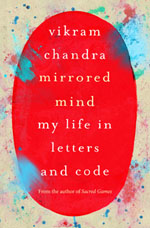 The latest from Chandra, author of the bestseller Sacred Games, is Mirrored Mind: My Life in Letter and Code, which explores computer coding and novel writing and the connections and trajectories of the seemingly opposing methods of expression.
The latest from Chandra, author of the bestseller Sacred Games, is Mirrored Mind: My Life in Letter and Code, which explores computer coding and novel writing and the connections and trajectories of the seemingly opposing methods of expression.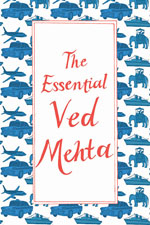 Ved Mehta ’56, the author of 27 books and many articles, has released The Essential Ved Mehta. The book contains excerpts from almost all of his nonfiction writings, beginning with his first novel Face to Face, published in 1957. Mehta was a staff writer at the New Yorker from 1960 to 1993, writing prolifically during his tenure. The Essential Ved Mehta contains Mehta’s published pieces that include his many writings on India and politics, as well as family stories and personal memoirs that delve into living with blindness since the age of 4.
Ved Mehta ’56, the author of 27 books and many articles, has released The Essential Ved Mehta. The book contains excerpts from almost all of his nonfiction writings, beginning with his first novel Face to Face, published in 1957. Mehta was a staff writer at the New Yorker from 1960 to 1993, writing prolifically during his tenure. The Essential Ved Mehta contains Mehta’s published pieces that include his many writings on India and politics, as well as family stories and personal memoirs that delve into living with blindness since the age of 4.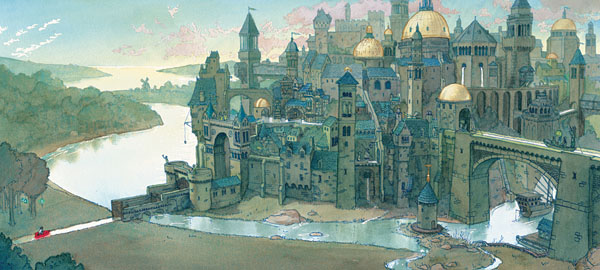
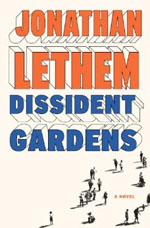 Though it is set in Queens, Pomona College Professor Jonathan Lethem’s latest novel,
Though it is set in Queens, Pomona College Professor Jonathan Lethem’s latest novel, 
 So did Hollywood seek out presidents or did presidents seek out Hollywood? Peretti says the answer is yes and yes. The attraction was mutual. “Presidents were fascinated by the cultural power wielded by the movies, while moviemakers were drawn to the dramatic realm of power in the real world,” says Peretti.
So did Hollywood seek out presidents or did presidents seek out Hollywood? Peretti says the answer is yes and yes. The attraction was mutual. “Presidents were fascinated by the cultural power wielded by the movies, while moviemakers were drawn to the dramatic realm of power in the real world,” says Peretti. During his Pomona College days, Dan Hickstein ’06 landed a prestigious
During his Pomona College days, Dan Hickstein ’06 landed a prestigious 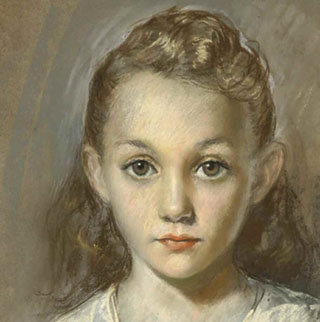 The result, nearly 10 years in the making, is Into the Light: The Healing Art of Kalman Aron, co-published in October by Hard Press Editions and Posterity Press, Inc. in association with Hudson Hills Press. A compelling and graceful mix of first-person memoir, biography and commentary, the book is also a comprehensive retrospective of Aron’s work, encompassing 210 stunning color plates and 30 black-and-white images.
The result, nearly 10 years in the making, is Into the Light: The Healing Art of Kalman Aron, co-published in October by Hard Press Editions and Posterity Press, Inc. in association with Hudson Hills Press. A compelling and graceful mix of first-person memoir, biography and commentary, the book is also a comprehensive retrospective of Aron’s work, encompassing 210 stunning color plates and 30 black-and-white images.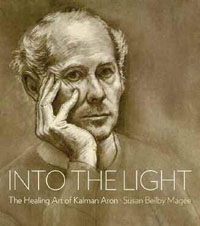 “I wasn’t going to have anybody write it,” 88-year-old Aron says from his home in Los Angeles, “because I didn’t want to remember it.” Magee, he says, “did a good job.”
“I wasn’t going to have anybody write it,” 88-year-old Aron says from his home in Los Angeles, “because I didn’t want to remember it.” Magee, he says, “did a good job.”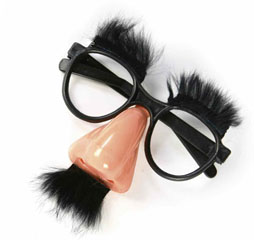 If you’re reading James Thurber and Robert Benchley and composing comedic poetry at the tender age of 7, then writing a book that examines humor from every conceivable angle doesn’t feel like that much of a stretch. Indeed, when David Misch ’72 began putting together Funny: The Book three years ago, it felt like the next logical step in a four-decade career that has included stints as a comedic folk singer, stand-up comedian and writer for such shows as Mork and Mindy and Saturday Night Live.
If you’re reading James Thurber and Robert Benchley and composing comedic poetry at the tender age of 7, then writing a book that examines humor from every conceivable angle doesn’t feel like that much of a stretch. Indeed, when David Misch ’72 began putting together Funny: The Book three years ago, it felt like the next logical step in a four-decade career that has included stints as a comedic folk singer, stand-up comedian and writer for such shows as Mork and Mindy and Saturday Night Live.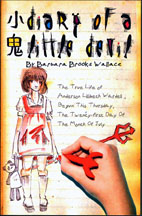 But she hasn’t forgotten her shaky start. Wallace, who today lives in a retirement home in McLean, Va., credits her success to an initially-nerve-wracking encounter with her freshman-year English professor at Pomona College.
But she hasn’t forgotten her shaky start. Wallace, who today lives in a retirement home in McLean, Va., credits her success to an initially-nerve-wracking encounter with her freshman-year English professor at Pomona College. “Nowhere in the public discourse did we see a reflection of the funny, independent and opinionated Muslim women we knew,” says Maznavi, who, with co-editor Ayesha Mattu, thought an anthology could help fill the void. “We decided to compile our faith community’s love stories as a celebration of our identity and heritage, and a way of amplifying our diverse voices, practice and perspectives.”
“Nowhere in the public discourse did we see a reflection of the funny, independent and opinionated Muslim women we knew,” says Maznavi, who, with co-editor Ayesha Mattu, thought an anthology could help fill the void. “We decided to compile our faith community’s love stories as a celebration of our identity and heritage, and a way of amplifying our diverse voices, practice and perspectives.”